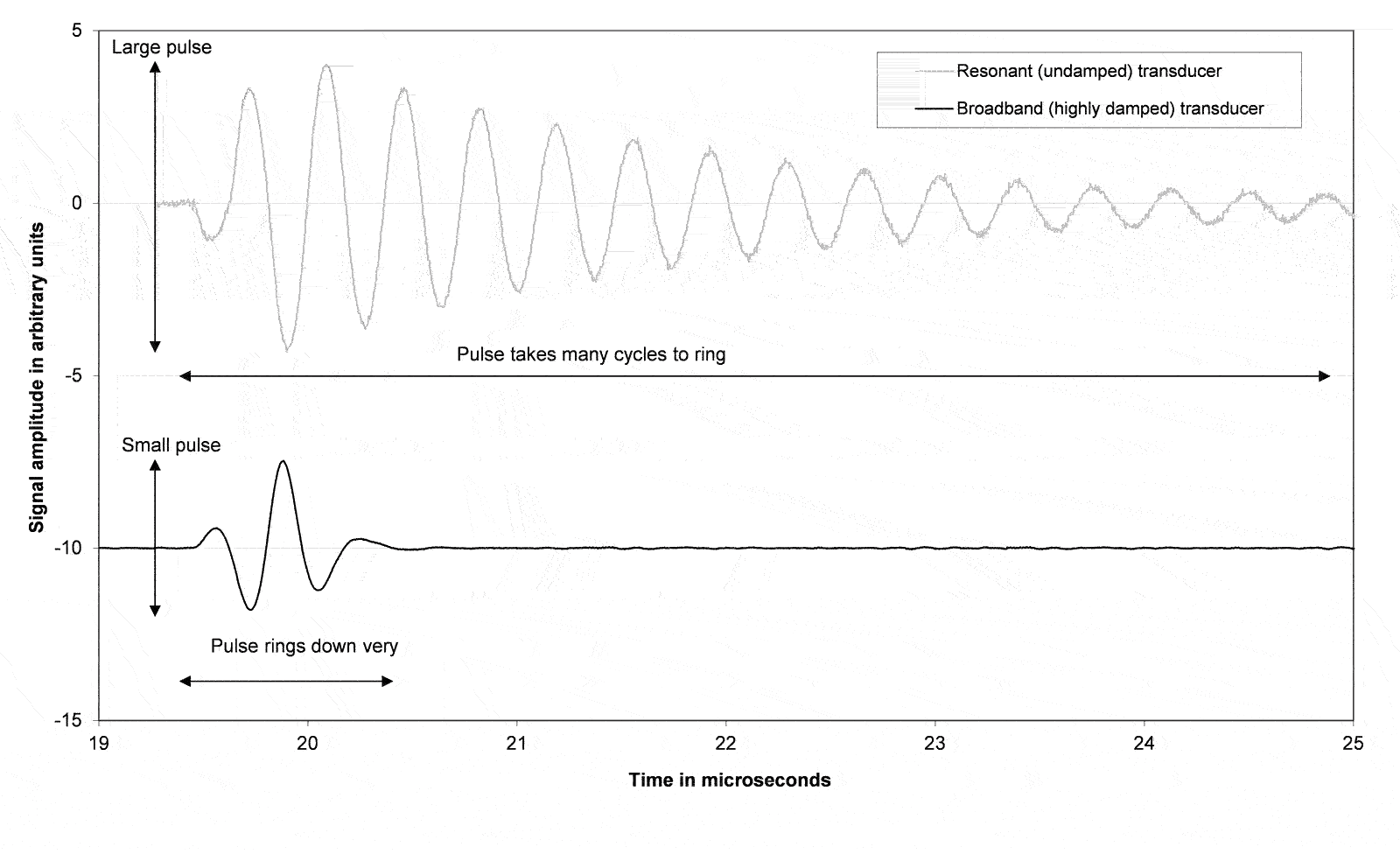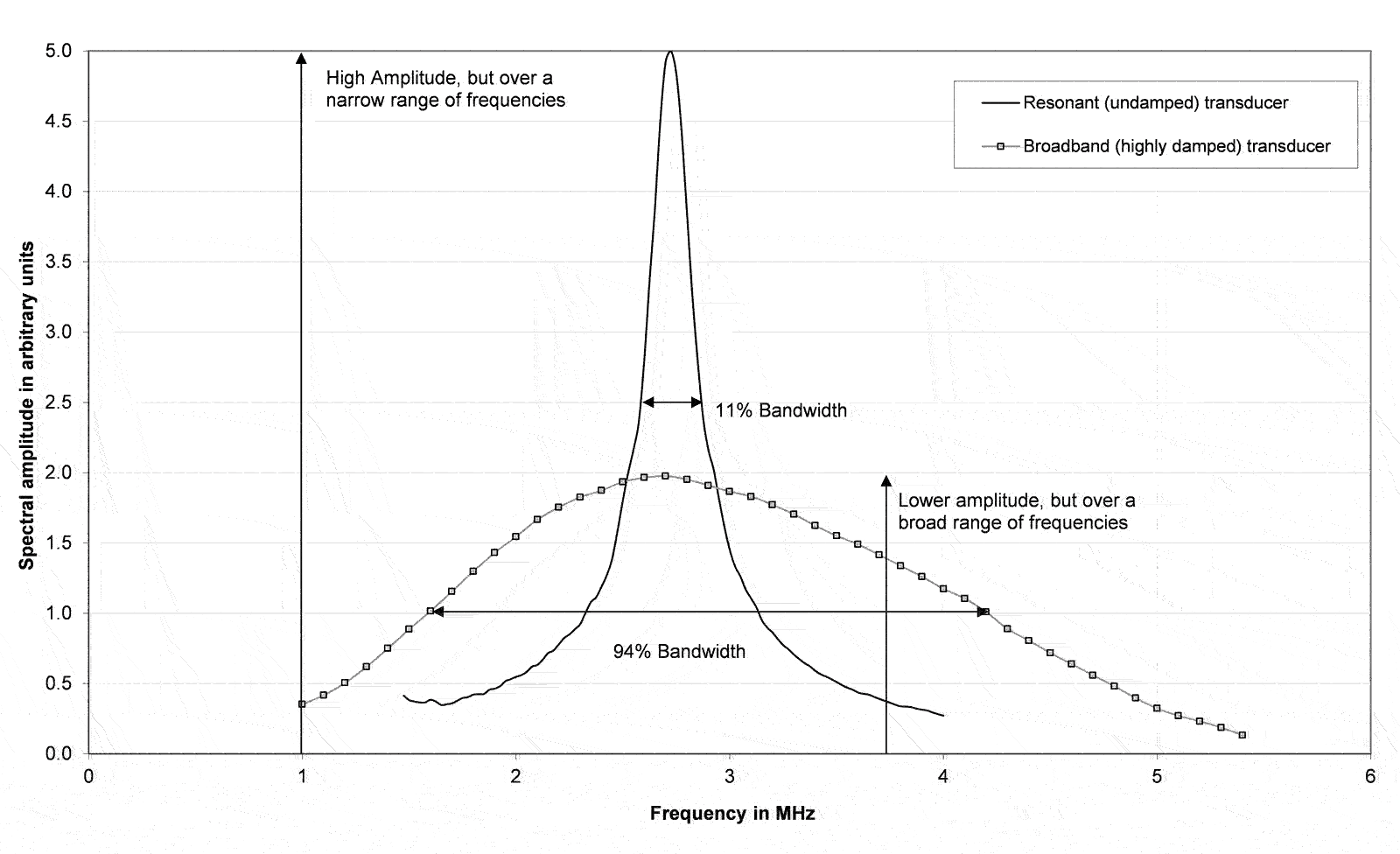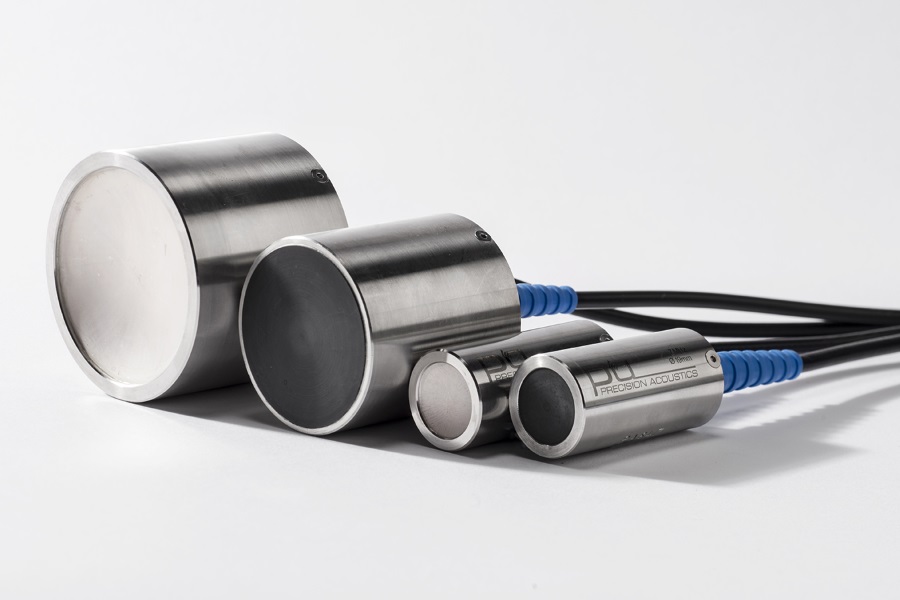Overview
Precision Acoustics has made ultrasound transducers for diverse applications in medicine and NDT. Using PZT, lead metaniobate (PMN) and other materials, transducers are made to customer’s requirements. Please specify centre frequency and active element diameter along with any focusing requirements.
To obtain a quotation, fill in transducer design questionnaire below.
Download the data sheet
Ultrasonic transducers FAQ's
Precision Acoustics manufactures transducers over the frequency range 0.2 MHz to 50MHz using a variety of different materials
- PVDF transducers are available in the range 3 MHz to 50 MHz
- Piezo-ceramic transducers are available in the range 0.5 MHz to 12 MHz
- 1-3 piezo-composite transducers are available in the range 0.2 MHz to 1 MHz
To answer this question it is important to consider the type of signal that you wish the transducer to generate.
All piezo-electric transducers are resonant devices. The performance of a resonant device is significantly affected by how much damping is applied as can be seen in the graph below. The description that follows will consider the two extreme conditions of very low, and very high damping. However, Precision Acoustics is also able to produce transducers with damping anywhere between these two limits.

An undamped (or resonant) transducer will produce a large output very close to its resonant frequency, but the amplitude of its response will decrease significantly away from the centre frequency. In contrast a highly damped transducer will produce a much lower output, but is capable of driving at a range of frequencies either side of the centre frequency.
It is common practice to describe this behaviour in terms of percentage bandwidth: the ratio of bandwidth and centre frequency. An undamped transducer will have a low percentage bandwidth, but high maximum output at resonance. Conversely a damped transducer will have a high percentage bandwidth, but with a lower maximum output.

It is also important to understand the effect that damping has on the time domain waveform produced by a transducer. A damped transducer will produce less acoustic output than a comparable resonant transducer, but it will have relatively short pulse duration. In contrast, an undamped transducer will produce a much larger output, but because it is a resonant device, the pulse will ring on for many cycles. It is this relationship between damping and resonance that means it is not possible to produce a high power output across a broad range of frequencies.
A summary of properties of the resonant and undamped transducers can be found in the table below:
| Resonant | Damped | |
| Percentage bandwidth | Low | High |
| Amplitude at centre frequency | High | Medium |
| Amplitude away from centre frequency | Low | Medium/Low |
| Time domain impulse response | >8 cycles | 2-3 cycles |
| Common drive signals | Continuous Wave or Toneburst | Swept sine wave (chirps) or pulses |
| Common applications | Physiotherapy, HIFU, ultrasonic heating, ultrasonic cleaning | Pulse/Echo, NDT, diagnostic imaging, Time of Flight measurements |
Piezo-ceramic materials are characterised by having good electrical to mechanical conversion capabilities, but relatively low internal damping. This makes them very good for producing resonant transducers, but they have to be damped heavily to produce broadband transducers. A typical heavily damped piezo-ceramic transducer will probably have a pulse that is 4-5 cycles long. They make excellent transmitting transducers and a reasonable choice for transmit/receive devices
Almost all piezo-ceramic transducers are supplied with an integral quarter wave matching layer to effectively couple the high characteristic acoustic impedance of piezo-ceramics (typically in excess of 30 MRayls) into the 1.5 MRayls load that is presented by water. Most Precision Acoustics piezo-ceramic transducers contain an integral electrical impedance matching network. This transforms the complex impedance presented by the transducer to something much closer to 50 Ω. This ensures optimum power transfer into the transducer from typical 50 Ω output impedance function generators and amplifiers.
Very high frequency devices are difficult to produce with piezo-ceramics because the crystals become very thin and prone to damage. Precision Acoustics normally only produces piezo-ceramic devices with centre frequencies of 10 MHz and lower. Piezo-ceramics have also been used in-house to produce highly resonant transducers with acoustic outputs in excess of 85W.
Piezo-polymer materials (e.g. PVdF) are characterised by having good mechanical to electrical conversion capabilities, but relatively high internal damping. This makes them very good for producing very short pulse, broadband transducers and impulse responses of-2-3 cycles are possible. However, the internal damping means that they have to be driven by much higher voltage levels than comparable piezo-ceramic devices. They make excellent receiving transducers and a reasonable choice for transmit/receive devices (particularly if good axial resolution is required).
The acoustic impedance of PVdF is very much closer to water than piezo-ceramics, and as such acoustic matching layers are not needed for PVdF based transducers. The nature of the electrical impedance presented by a PVdF transducer means that it is difficult to effectively transform it to 50 Ω. Although the impedance could be matched over a limited frequency range, this would compromise the broadband behaviour of this type of device. Therefore, most Precision Acoustics piezo-polymer transducers are supplied with simple inductive matching (to cancel much of the reactance of the transducer), but are not matched to 50 Ω.
PVdF films can be very thin indeed and therefore can be used to produce high frequency transducers. Miniature piezo-polymer transducers (1mm diameter) have been produced at Precision Acoustics with centre frequencies in excess of 35 MHz.
If you need a transducer with a short delivery time, we may have a unit that meets your configuration requirements readily available.





